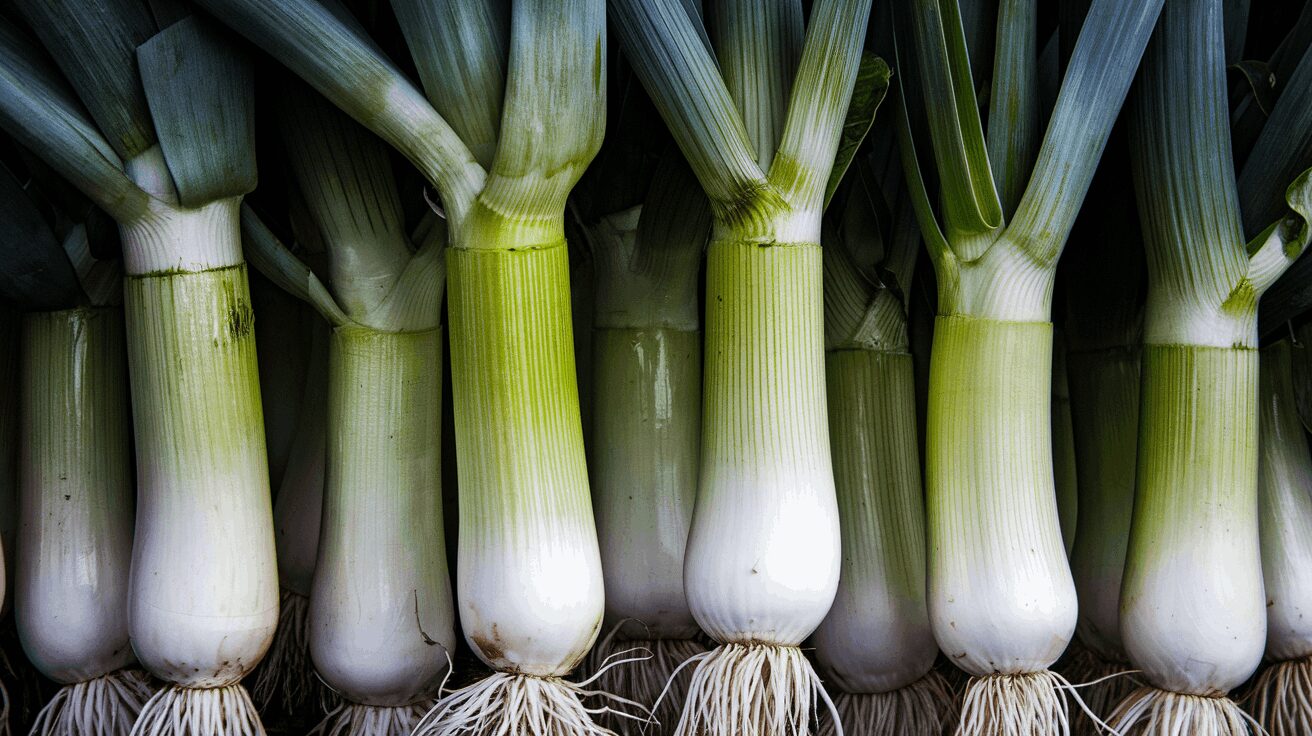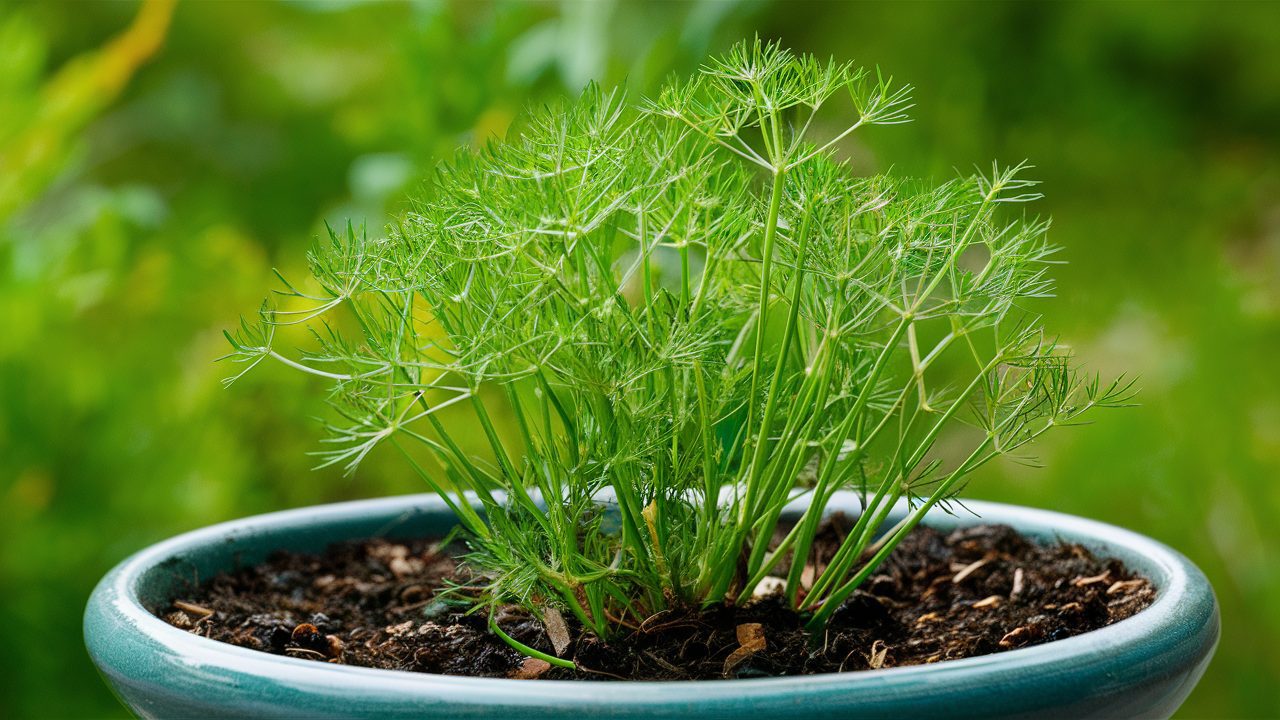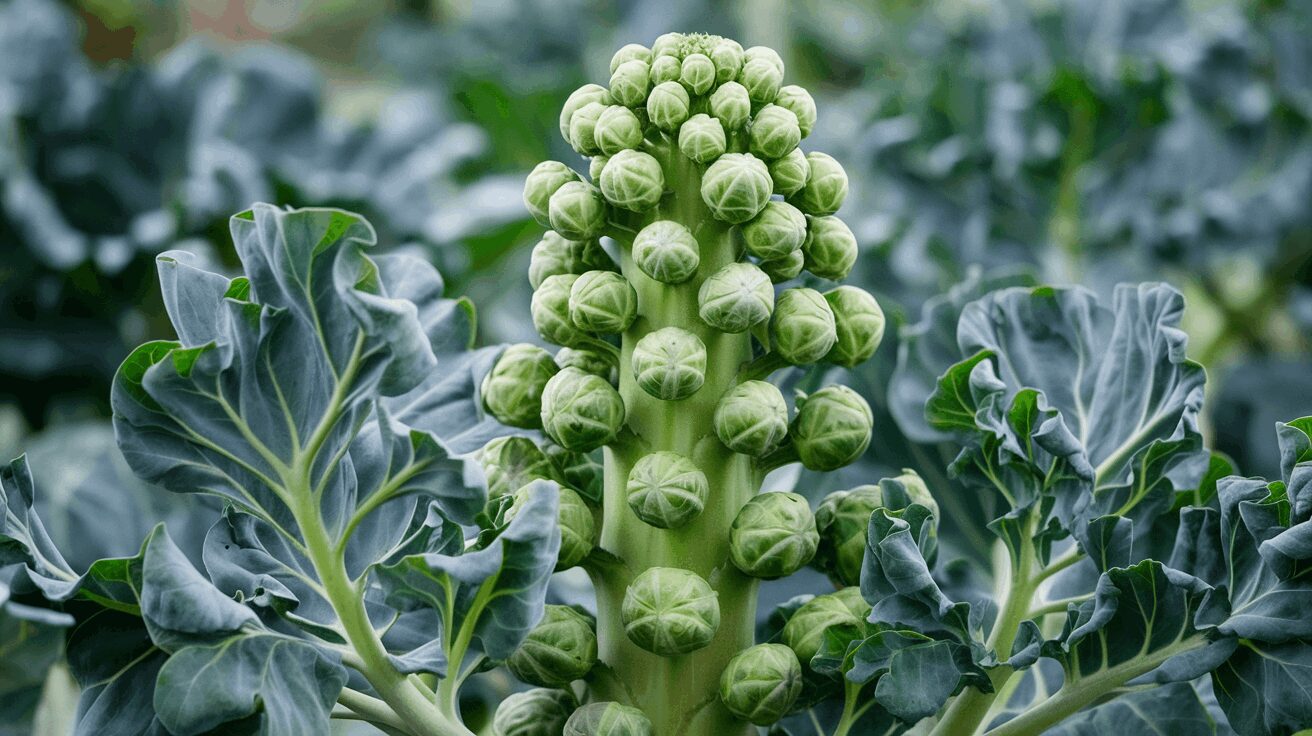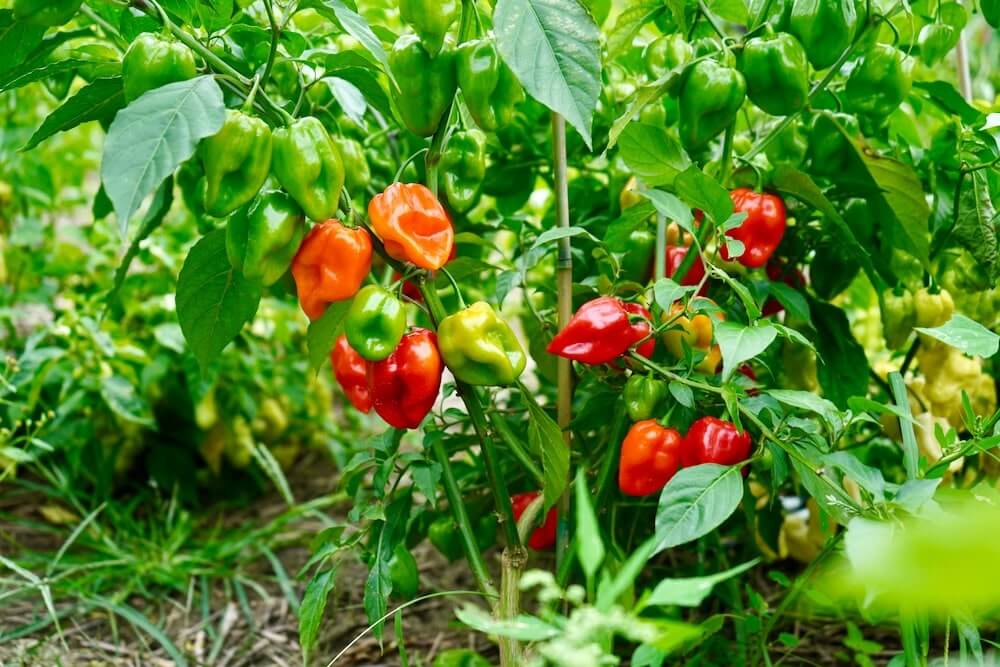Celery companion plants are the secret to a thriving and bountiful garden. Whether you're a seasoned gardener or just starting out, knowing which plants to pair with your celery can make all the difference in your harvest.
By choosing the right companions, you not only improve your celery's growth but also enhance the overall health of your garden. Let's dive into the best practices, ideal plant partners, and a few practical tips to make your celery plants—and your garden—flourish.
What Is Companion Planting?
Companion planting is the practice of growing different plants together to enhance growth, improve soil health, and deter pests naturally.
The idea is simple: some plants grow better together than alone. For example, some plants can repel pests that might harm their neighbors, while others might provide shade or improve soil fertility.
In the case of celery, planting it alongside the right companions can lead to stronger, healthier plants and a more productive garden overall.
Benefits of Companion Planting
- Natural Pest Control: Certain plants can repel pests or attract beneficial insects, reducing the need for chemical pesticides.
- Improved Soil Health: Plants like legumes can fix nitrogen in the soil, improving fertility for their companions.
- Efficient Use of Space: Companion planting allows you to make the most of your garden space by pairing plants that grow well together.
- Enhanced Growth: Some plants release chemicals that can boost the growth of their neighbors.
Looking for a fresh idea on companion planting? This video guide by Simplistic Farms is a great way to get inspired about general companion planting techniques.
Tips for Growing Celery Companion Plants
Growing celery can be a bit tricky, but with some practical steps and the right companions, you'll be well on your way to a successful harvest.
- Choose the Right Location: Celery prefers a sunny spot with some partial shade, especially in the hottest part of the day. It thrives in rich, well-draining soil that retains moisture but doesn't get waterlogged.
- Prepare the Soil: Before planting, enrich your soil with plenty of organic matter, like compost or well-rotted manure. Celery is a heavy feeder and will benefit from nutrient-rich soil. Adding mulch can also help retain moisture and keep the soil cool.
- Plan Your Layout: When companion planting, consider the space needs of both celery and its companions. Taller plants can provide necessary shade, while smaller, quick-growing plants can fill in the gaps.
- Water Regularly: Celery requires consistent moisture, so make sure to water it regularly, especially during dry spells. Drip irrigation or soaker hoses work well to keep the soil evenly moist without wetting the leaves.
- Feed Throughout the Season: Fertilize your celery with a balanced, organic fertilizer every few weeks to keep it growing strong. Avoid over-fertilizing, which can lead to excessive leaf growth at the expense of stalk quality.
- Rotate Your Crops: To prevent soil depletion and reduce the risk of pests and diseases, practice crop rotation by not planting celery (or its relatives like carrots or parsley) in the same spot year after year.
Following these tips will not only help your celery thrive but also create a healthier, more productive garden overall.
Related:
Celery Companion Plants Vegetables
Carrots

- Height: 8-12 inches
- Spread: 2-3 inches
- Flavor: Sweet and earthy
- Growth: Root vegetable
Carrots are low-growing root vegetables that won't overshadow your celery. They can be planted in between celery rows, making efficient use of garden space. Carrots also help break up the soil, improving its texture for your celery plants.
Why you'll love it: Carrots grow well with celery because they don't compete for nutrients—they dig deep while celery roots are more shallow. Plus, their presence can help deter pests like carrot root fly and aphids that might otherwise bother your celery.
Leeks

- Height: 12-18 inches
- Spread: 6-8 inches
- Flavor: Mild, onion-like
- Growth: Bulbous stalk
Leeks have tall, slender stalks that complement the growth habit of celery. They have a mild onion flavor, which doesn’t overpower but adds depth to dishes. Leeks thrive in similar conditions as celery, making them a natural pairing.
Why you'll love it: Leeks are excellent pest repellents, especially against aphids and carrot flies. They also help improve soil aeration, which benefits the roots of celery. Planting leeks with celery creates a symbiotic environment where both plants thrive.
Beets

- Height: 8-12 inches
- Spread: 4-6 inches
- Flavor: Sweet, earthy
- Growth: Root vegetable
Beets grow well beneath the soil, leaving plenty of room for celery above. These root vegetables come in a variety of colors, adding visual interest to your garden. They’re easy to grow and require similar care to celery, making them ideal companions.
Why you'll love it: Beets and celery make good neighbors because they occupy different soil levels, reducing competition for nutrients. Beets also help in loosening the soil, which can improve celery root development.
Celery Companion Herbs
Dill

- Height: 18-24 inches
- Spread: 10-12 inches
- Flavor: Tangy, anise-like
- Growth: Annual herb
Dill is a feathery herb with a unique flavor that can enhance many dishes. It’s known for attracting beneficial insects like hoverflies and predatory wasps, which help keep pest populations in check. Dill's delicate leaves add a soft texture to the garden.
Why you'll love it: Dill helps protect celery from common pests, making it a natural ally in your garden. Plus, the two plants don't compete for resources, allowing both to grow strong. Dill’s presence can also enhance the flavor of celery, making your harvest even tastier.
Cilantro

- Height: 12-24 inches
- Spread: 8-12 inches
- Flavor: Citrusy, slightly peppery
- Growth: Annual herb
Cilantro is a versatile herb known for its bright, fresh flavor. It grows quickly and prefers the same cool, moist conditions as celery. Cilantro's strong scent helps deter pests, providing a natural form of protection for nearby plants.
Why you'll love it: Cilantro and celery share similar growing conditions, making them ideal companions. The herb’s aromatic qualities also help repel aphids and other pests that might target celery, allowing both plants to thrive.
Parsley

- Height: 10-12 inches
- Spread: 6-9 inches
- Flavor: Fresh, slightly peppery
- Growth: Biennial herb
Parsley is a popular herb with a fresh, bright flavor. It’s easy to grow and requires minimal care, making it a great companion for celery. Parsley’s deep green leaves provide a lush contrast to the more upright celery stalks.
Why you'll love it: Parsley helps improve the flavor of celery when grown nearby. The two plants have similar water and sunlight needs, ensuring neither will outcompete the other. Parsley can also help attract beneficial insects to the garden.
Celery Root Companion Plant
Parsnips

- Height: 12-18 inches
- Spread: 3-6 inches
- Flavor: Sweet, nutty
- Growth: Root vegetable
Parsnips are long, white root vegetables with a sweet, nutty flavor. They grow well in cooler climates and can be harvested in the fall, much like celery root. Parsnips are relatively low-maintenance, making them an easy addition to any garden.
Why you'll love it: Parsnips share similar soil and moisture requirements with celery root, making them compatible companions. They also help improve soil structure, which can benefit the root development of both plants.
Brussels Sprouts

- Height: 24-36 inches
- Spread: 18-24 inches
- Flavor: Mildly sweet, nutty
- Growth: Biennial vegetable
Brussels sprouts are tall, leafy vegetables that grow on sturdy stalks. They require a long growing season and thrive in cool weather, much like celery root. The sprouts form along the stalk, providing a vertical growing habit that pairs well with the low-growing celeriac.
Why you'll love it: Brussels sprouts provide natural shade for celeriac, helping to keep the soil cool and moist. They also have similar nutrient requirements, allowing for efficient use of garden space. This pairing can help maximize your harvest in cooler climates.
Radishes

- Height: 6-8 inches
- Spread: 4-6 inches
- Flavor: Spicy, crisp
- Growth: Root vegetable
Radishes are quick-growing root vegetables with a crisp, spicy flavor. They’re one of the first crops you can harvest in the spring, making them ideal for early planting with celery root. Radishes are also known for their pest-repelling properties.
Why you'll love it: Radishes grow quickly, providing early harvests while your celery root matures. Their quick growth also helps break up the soil, improving aeration for celery root. Radishes can act as a trap crop, drawing pests away from the more vulnerable celeriac.
Celery Bad Companion Plants
Just as there are good companions, there are bad ones too:
- Corn: Corn is a heavy feeder and will compete with celery for nutrients.
- Potatoes: These tubers can attract similar pests, making them a poor match for celery.
- Parsley: Although related, parsley can attract pests that might also go after your celery.
Avoiding these plants can save you a lot of headaches down the line.
Celery and Lettuce Companion Plants

Lettuce and celery make an excellent pair in the garden:
- Lettuce: Lettuce grows quickly and can be harvested before celery fully matures, reducing competition for space.
- Spinach: Another leafy green, spinach grows well with celery, sharing its preference for cooler temperatures.
These leafy greens not only grow well together but also help with weed suppression.
Celery and Tomato Companion Plants

Tomatoes and celery can be grown together, but with some considerations:
- Tomatoes: They can provide shade for celery during the hottest part of the day, which celery appreciates.
- Basil: Planting basil nearby can improve the flavor of both tomatoes and celery.
While they can be compatible, make sure your celery isn't overshadowed by the larger tomato plants.
Can You Plant Celery with Peppers?
Yes, you can plant celery with peppers, but there are some things to keep in mind:
- Peppers: Both sweet and hot peppers can grow well with celery as they don’t compete for the same resources.
- Marigolds: Consider adding marigolds to the mix as they can deter pests that might otherwise target your peppers or celery.
This pairing works best when you carefully manage their growing space and ensure both get the nutrients they need.
Chinese Celery Companion Plants
Chinese celery, also known as leaf celery, has some specific companions:
- Garlic and Chives: These alliums can help repel aphids and other pests.
- Radishes: Quick-growing radishes can be planted between rows of celery to maximize space.
Chinese celery is a bit more forgiving than regular celery, so you have some flexibility in choosing companions.
FAQs
What should you not plant next to celery?
Avoid planting corn, potatoes, and parsley near celery. Corn and potatoes are heavy feeders that compete for nutrients, while parsley can attract pests that also target celery.
Where does celery like to be planted?
Celery thrives in a location with full sun to partial shade, especially in the hottest part of the day. It prefers rich, well-draining soil that retains moisture, making raised beds or well-prepared garden beds ideal for its growth.
How much room does celery need to grow?
Celery plants need about 6 to 8 inches of space between each other to grow properly. This spacing ensures enough room for airflow, reducing the risk of disease, and allows each plant to develop strong, healthy stalks.
Can you grow celery in a planter box?
Yes, you can grow celery in a planter box, as long as it’s deep enough (at least 8 inches) to accommodate the roots and wide enough to space the plants adequately. Ensure the planter has good drainage and keep the soil consistently moist for the best results.
Can I plant celery and lettuce together?
Yes, celery and lettuce make excellent companions. Lettuce can grow in the shade provided by celery, and both plants have similar moisture and soil requirements, making them a harmonious pairing in the garden.
Final Thoughts
Choosing the right celery companion plants can transform your garden into a vibrant, productive space. By understanding the benefits of companion planting and carefully selecting which plants to grow alongside your celery, you're setting yourself up for success.
Remember, the key is in the planning—consider the needs of each plant, how they interact, and the space they require. With a bit of care and attention, your garden will thrive, providing you with a rich harvest of celery and more.
Ready to give companion planting a try? Start experimenting with different combinations in your garden and see how your celery responds. Have some tips or experiences to share? Drop them in the comments below—I’d love to hear what’s worked for you!
External resources: For more gardening tips on celery companion planting, check out The Spruce, and Almanac for more growing tips.
Happy gardening!


